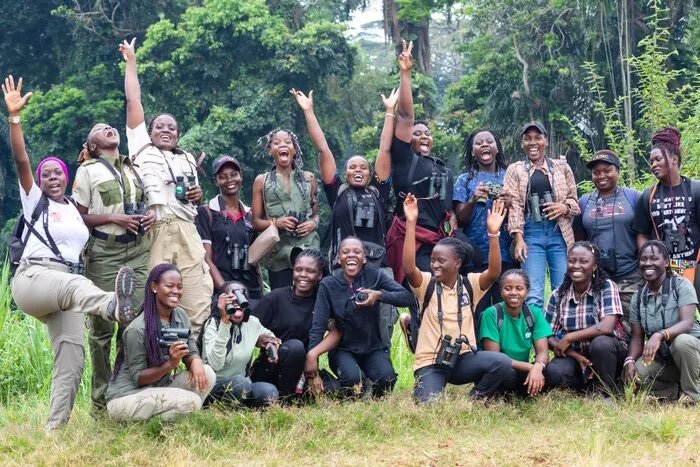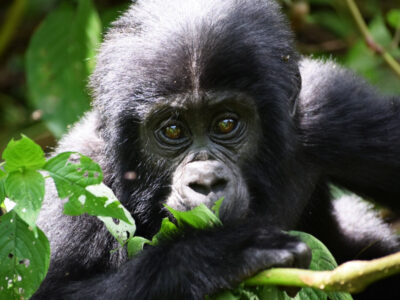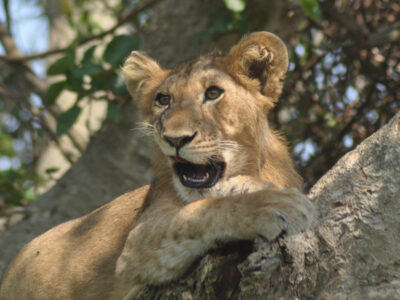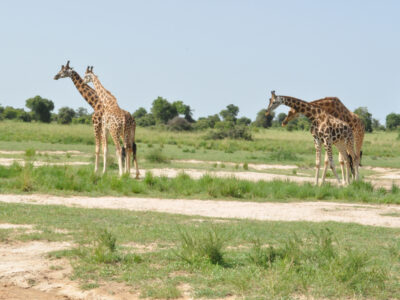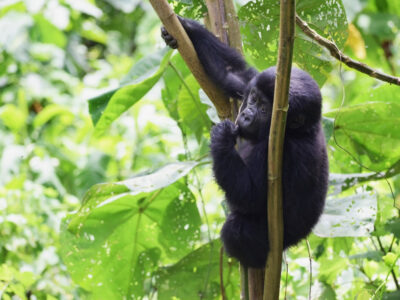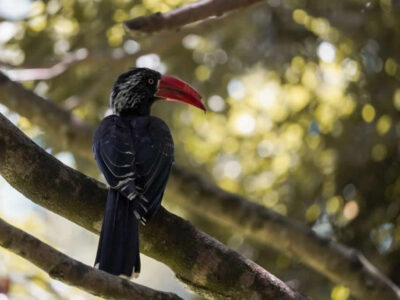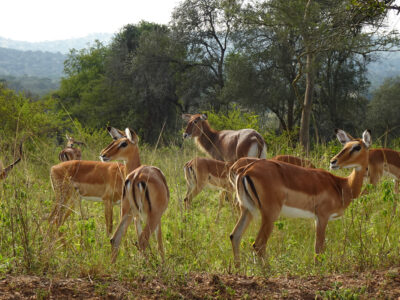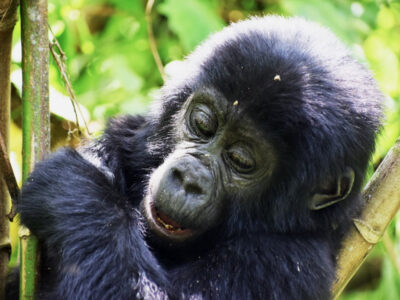The world of birds is associated with men all too often. Nevertheless, in Exploring Uganda, women birders are defying the odds by claiming their space is this nascent but equally critical section of Uganda’s rich biodiversity.
“We are determined to break the norms and barriers imposed on women not just in birding but Uganda’s tourism industry” Judith Mirembe, the chairperson of Uganda Women Birders Club says.
Mirembe who had grown close to the family involved in birding but she never took interest until when she joined University says they still have such social perceptions that even bird watching and guiding tourists are seen as roles in which women can’t fit.
Mirembe whose Association now boats of 80 members says Harriet Kamugisha was only one-woman birder at the time they started in 2013. They did not know where they would end for them who were starting. They said let’s just do it because there was an opportunity.
According to Mirembe is to bolster female participation in nature Guiding, a field traditionally dominated by men the goal of the Association.
she narrates further saying that they did not have much inspiration. They did not have so many people to look up to because everybody was a man. Mirembe added saying that they are now working with these guys, probably earning the same money or more. This makes them feel proud of ourselves and they want to see more women join them.
Uganda Women Birders hosted the inaugural International Conference for Women Birders Expo held in Kampala last December. The Expo attracted birders from all continents around the world. Local and international speakers outlined the need for Uganda its tourism numbers.
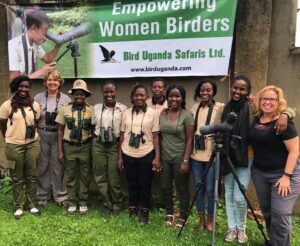
There was a suggestion that the earnings to $700 million or about two trillion shillings by attracting 100,000 birders by 2030. An enormous task for players in the birding industry and of course.
Judith Mirembe and her association. It that goal attainable? “Yes. If Uganda Tourism Board promotes birding in Uganda like it has promoted the Uganda gorillas in the country,” she says. Other payers in Uganda’s tourism sector especially those engaged in birding have shared her view. They have argued that the devil is in the figures about bird and birding destinations in Uganda.
Bird-watching as a Market Segment Bird-based tourism or Avitourism is considered a sub-category or “niche market” of nature-based tourism. A market analysis of bird-based tourism in the USA found that while historically restricted to the elite, bird watching has “grown into a highly popular pastime for the non-professional.
Despite the fact that Uganda is a birding paradise, It is found that Bird watchers combine bird viewing with other wildlife viewings because the entire national parks from Kidepo, Queen Elizabeth, and Mghahinga, Murchison falls, semuliki, Bwindi Impenetrable, amoung kibale are also top birding destinations.
An Ornithologist visiting Uganda recently wrote agreeing with his birding guide Johnnie Kamugisha that Uganda is a birding paradise. He said that Wendy and him ended up seeing 352 species of birds in 11 days of birding, along with a tremendous list of mammals including Mountain Gorilla, Chimpanzees, Lion, Hyenas, Elephant, Giraffes, and on and on.
“Uganda has over 1060 bird species mainly because the country is strategically located in the center of central Africa and covers a high diversity of habitats suitable for many species.” a report by Nature Uganda “Monitoring Birds for Selected Sites in Uganda to Uganda Wildlife Authority said in 2019.
“These habitats include among others forests, woodlands, grasslands, agricultural lands, wetlands, and open waters.” It said.
Magada, a licensed tour guide with Uganda Tourism Board said that First of all you have to differentiate one bird from the other; you have to know where they are. So have to be keen, and you need to have passion and interest. So when I looked at the wildlife protection that he was doing, he wanted to add something challenging.
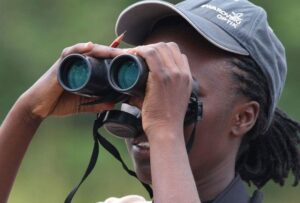
She is one of the female birding superstars of Uganda and she has learned the hard way through the journey.
She shares to fellow birders that they can testify that if it is the water birds, it is very easy they are there. However, if they go to an area like Budongo forest, they know that they are going to come back with an ache. If they go to Bwindi, they are going down hiking. It is real work so they have to be committed.
She continuously said that they have to live to the challenge. Are you looking at different colors, looking at different levels, are you looking at the ground, are you looking at your eye level or are you looking into the canopies?
Magada without a blink of an eye says it is the marabou stork commonly known ass or Karoli in Kampala when asked about her favorite bird species.
She added why she loves that bird because of the role it plays in the environment. It was her study bird but she is trying to engage her community with waste management. When the marabou storks come around, they are ever chasing them. The community should be told that if they properly dispose of the waste, then they will not be here.
Individuals under the guise of keeping Kampala city and its environs clean have massacred hundreds of marabou storks. Most international tourists to Uganda tend to add the Mabamba wetland to their itinerary.
Mabamba is a Ramsar site known for hosting tens of species including the shoebill Stork. During Prosy Nanyobi’s internship, she has led birders to Mabamba wetlands but she cut her milk teeth in birding at Mpanga forest.
She says that when you are in a forest, only what you hear are the calls from the birds. Before you wake up you hear the calls. she said let me look at these birds. Let her follow one by one.
Nanyombi did not know that she needed binoculars “I had a bird book for the site. However, you could open from the first to the last page. Without seeing the birds that are singing,” Nanyombi had completed a course in tourism management but she did not see guiding visitors about birds and birding.
Her interest gradually grew each time she would see a different color of bird and different songs from each in the forest. “I mastered about 70 species of birds. I would generalize like turacos and manikins. Then Herbert Byarunga gave me a trip of 23 days. It was a bit too hard. Because loved these birds, their colors, the calls of robin chat, thrashes are calling, I felt like I’m attached to them”
Problems faced by women birders.
Maganda mentions the cultural aspect as asked about the biggest challenge ahead for women birders. She says that people think probably this is a man’s work. They think if women are doing it, probably they are in the wrong offices. In addition, the kind of work they do. Long distances, putting on trousers and even other cultures may not. she remembers carrying her baby to Mount Elgon, Judith carried a baby.
Men shaped the culture of birding and still dominate it, but that could soon change. It is a major milestone that Judith Mirembe’s Association has inspired women in Uganda Kenya, Rwanda, and Tanzania.
The lives of the women who join them could transform more than just. They could also transform birding itself — and maybe even the world.
What to pack as women birders?
- Long trousers, long t-shirts
- Comfortable hiking boots
- Water and snacks
- Binoculars
- Cameras
- Rain coat
- Insect repellent.

